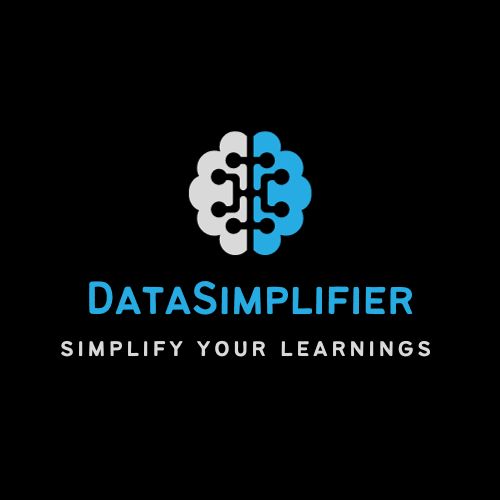In the ever-evolving landscape of data analytics, a well-curated data analytics portfolio is a key asset that showcases your skills, projects, and achievements.
As we step into 2024, the demand for skilled data analysts continues to rise, making it more essential than ever to present yourself as a standout candidate.
Building an impressive data analytics portfolio not only demonstrates your expertise but also serves as a testament to your ability to solve real-world problems.
I’ll guide you through the meticulous process of creating awesome Data Analytics Portfolio that not only showcases your technical powers but also leaves a lasting impression in the ever-evolving world of data. Let’s explore a comprehensive guide on how to create a compelling data analytics portfolio in 2024.

Step 1: Understanding the Trends
You can start with researching the latest trends and technologies used in data analytics. Identify the tools, programming languages, and methodologies that are in demand. Stay informed about emerging technologies such as machine learning, artificial intelligence, and cloud computing.
Step 2: Showcasing Your Technical Skills
After identifying the latest trends, you can highlight your technical proficiency in tools like Excel, Python, R, SQL, and libraries such as NumPy, Pandas, and Scikit-Learn. These versatile tools allow us to manipulate, analyze, and visualize data with utmost precision. Whether you’re extracting insights from raw datasets or crafting intricate statistical models, mastering these languages is the cornerstone of any data analyst’s skill set. After learning the concepts, you can provide code snippets, scripts, or links to your GitHub repositories to demonstrate your coding abilities and the projects you’ve worked on.
Step 3: Projects to tell a compelling story
After mastering the essential tools, you can choose projects that not only showcase your technical skills but also tell a compelling story. Focus on projects that demonstrate your data analytical ability to derive actionable insights from data. Include a mix of personal projects of your interest, academic endeavors, and real-world applications.
If you are still confused on which projects to pick up, then you can refer this page where I specified best 5 data analyst projects for freshers.
Step 4: Interactive dashboards & visualizations
While working on the projects, you can leverage interactive data visualizations tools like Tableau, Power BI, or Plotly. These visuals help you to effectively communicate complex insights in much easy way to make your portfolio more engaging. A prospective employer should be able to understand your data analytics portfolio projects at a glance.
Step 5: Emphasizing Domain Expertise
If you already have some prior experience or expertise in a specific industry or domain, you can highlight it in your projects. Try to reflect your understanding of domain-specific challenges in your data analytics portfolio projects.
Step 6: Data Cleaning and Preprocessing
Most of the time of data analysts or data scientists goes in data cleaning and processing step. So, it becomes crucial to showcase your proficiency in data cleaning and preprocessing. Discuss how you handled missing data, outliers, and performed feature engineering to enhance the quality of the data.
Highlight your ability to translate analytical prowess into real-world impact through compelling case studies. Dive deep into projects that demonstrate your problem-solving skills, strategic thinking, and the ability to derive actionable insights.
Step 7: Incorporating Machine Learning
If you have experience with machine learning, include projects that demonstrate your understanding of different algorithms and their applications. Discuss model selection, training, and evaluation metrics in your data analytics portfolio projects to showcase your problem-solving skills.
Step 8: Soft Skills and Communication
Highlight your soft skills, especially your ability to communicate complex findings to non-technical stakeholders. Include reports, presentations, or visualizations that showcase your ability to translate data insights into actionable business recommendations.
Step 9: Continuous Learning:
Showcase your commitment to continuous learning by including any relevant data analytics certifications, online courses, or workshops you have completed. This reflects your dedication to staying current with industry trends.
Develop a consistent personal brand across your portfolio, resume, and professional profiles. Create a cohesive narrative that emphasizes your unique strengths, experiences, and the value you bring to a prospective employer.
Step 10: All-in-one data analytics portfolio
Put everything together in a special folder or website. Your data analytics portfolio is like a scrapbook of all your data adventures. Make it simple, colorful, and full of your amazing discoveries. Now, you’re all set to share your data magic with the world!
If you are looking for new job opportunities, then you can find some in these telegram channels: Jobs & Placement Opportuities & Data Analytics Jobs & Internships
Conclusion
Crafting a data analytics portfolio in 2024 demands a blend of technical mastery, analytical finesse, and a commitment to ethical data practices. By incorporating these elements into your data analytics portfolio, you not only showcase your expertise but also align yourself with the legacy of excellence.
Keep it updated, seek feedback from peers or mentors, and adapt to the changing landscape of data analytics. As you embark on creating your portfolio in 2024, remember that it is not just a showcase of your past work but a preview of the valuable contributions you can make in the exciting field of data analytics.
Hope it helps 🙂
Share the post with your friends

2 thoughts on “How to create awesome data analytics portfolio in 2024”